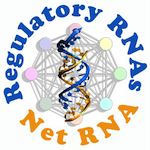The interactions between a plant and its microbiota are a rapidly growing field of research, as the microbiota has a strong impact on the health and development of plants. It now appears that plants have the ability to modify the structure of their microbiota to favor their colonization by beneficial bacteria such as those producing a Plant-Growth Promoting (PGP) effect and to limit the proliferation of pathogens. Nevertheless, the mechanisms involved in this selection are still poorly understood.
In a study published in the International Journal of Molecular Science, scientists from Hubert Schaller‘s team, in collaboration with the PIMS, AEG and Bioinformatics platforms of the IBMP, and the team of Pierre Peyret (Clermont-Ferrand), studied whether some key isoprenoid compounds could play a role in the selection of the microbial community by the host plant. A mutant of Arabidopsis thaliana affected in the isoprenoid biosynthetic pathways was characterized. A metabolomic analysis showed that this mutant has a partial defect in the biosynthesis of terpenoids, phenylpropanoids and phospholipids. To further investigate the impact of isoprenoids in plant selection of the microbiota, the susceptibilities of wild-type and mutant plants to the pathogen Pseudomonas syringae were compared. The mutant plants are more susceptible to infection. In addition, bacteria affiliated to the genus Streptomyces colonized the mutant plant less efficiently than the wild-type plant. These Streptomyces bacteria are known to produce various antibiotics and some have a PGP role or protective role against certain pathogens. This study revealed that the Streptomyces-Arabidopsis interaction involves molecular processes involving terpenoid, phenylpropanoid, and phospholipid biosynthesis that allow the wild-type plant to specifically recruit Streptomyces bacteria. Altogether, these results are in agreement with the hypothesis that Streptomyces bacteria are recruited by the plant via specific signals or mechanisms.















